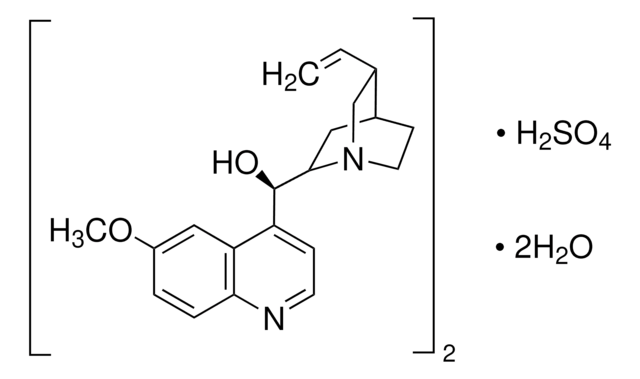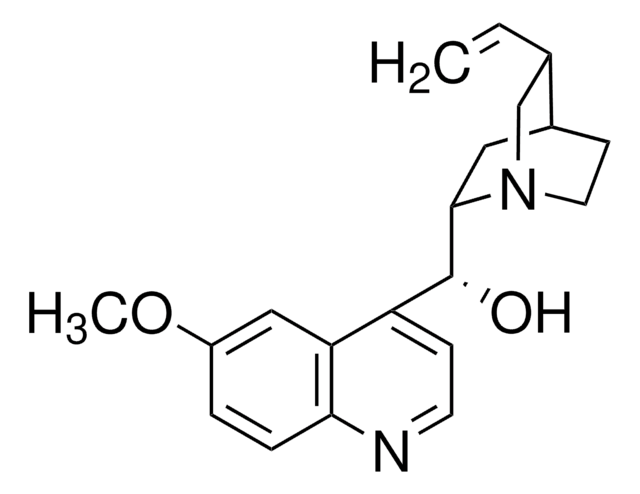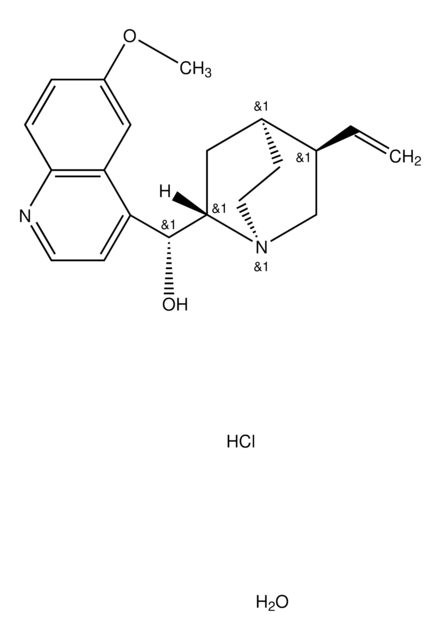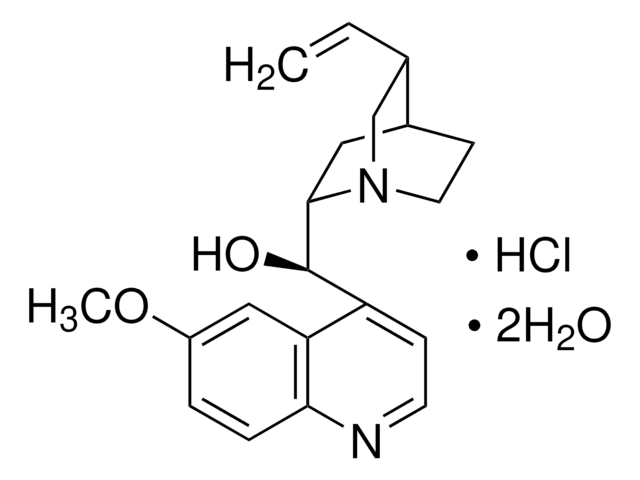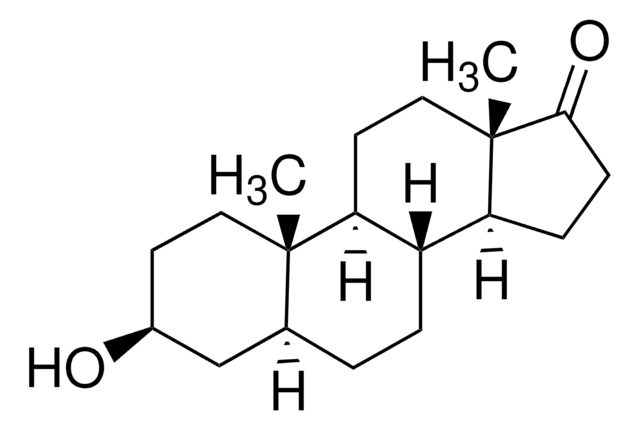22640
Quinine hemisulfate salt monohydrate
BioReagent, suitable for fluorescence, 99.0-101.0%
About This Item
Prodotti consigliati
Nome Commerciale
BioReagent
Livello qualitativo
Saggio
99.0-101.0%
Punto di fusione
~225 °C (dec.) (lit.)
Fluorescenza
λex 347 nm; λem 448 nm in 0.5 M sulfuric acid
Compatibilità
suitable for fluorescence
Spettro attività antibiotica
parasites
Modalità d’azione
enzyme | inhibits
Stringa SMILE
O.O.OS(O)(=O)=O.COc1ccc2nccc([C@@H](O)C3CC4CCN3C[C@@H]4C=C)c2c1.COc5ccc6nccc([C@@H](O)C7CC8CCN7C[C@@H]8C=C)c6c5
InChI
1S/2C20H24N2O2.H2O4S.2H2O/c2*1-3-13-12-22-9-7-14(13)10-19(22)20(23)16-6-8-21-18-5-4-15(24-2)11-17(16)18;1-5(2,3)4;;/h2*3-6,8,11,13-14,19-20,23H,1,7,9-10,12H2,2H3;(H2,1,2,3,4);2*1H2/t2*13-,14-,19-,20+;;;/m00.../s1
ZHNFLHYOFXQIOW-LPYZJUEESA-N
Cerchi prodotti simili? Visita Guida al confronto tra prodotti
Descrizione generale
Applicazioni
Azioni biochim/fisiol
Avvertenze
Warning
Indicazioni di pericolo
Consigli di prudenza
Classi di pericolo
Eye Irrit. 2 - Skin Irrit. 2 - STOT SE 3
Organi bersaglio
Respiratory system
Codice della classe di stoccaggio
11 - Combustible Solids
Classe di pericolosità dell'acqua (WGK)
WGK 3
Punto d’infiammabilità (°F)
Not applicable
Punto d’infiammabilità (°C)
Not applicable
Dispositivi di protezione individuale
dust mask type N95 (US), Eyeshields, Gloves
Scegli una delle versioni più recenti:
Possiedi già questo prodotto?
I documenti relativi ai prodotti acquistati recentemente sono disponibili nell’Archivio dei documenti.
I clienti hanno visto anche
Il team dei nostri ricercatori vanta grande esperienza in tutte le aree della ricerca quali Life Science, scienza dei materiali, sintesi chimica, cromatografia, discipline analitiche, ecc..
Contatta l'Assistenza Tecnica.